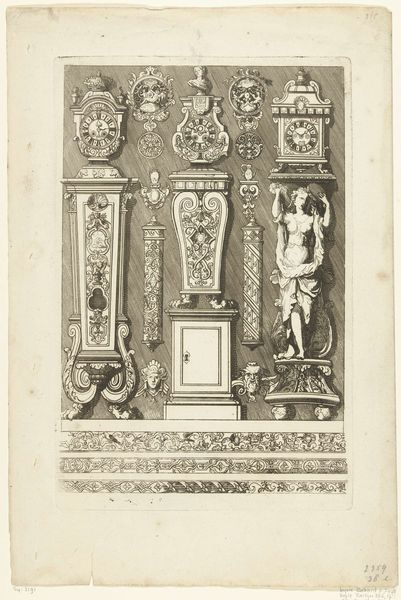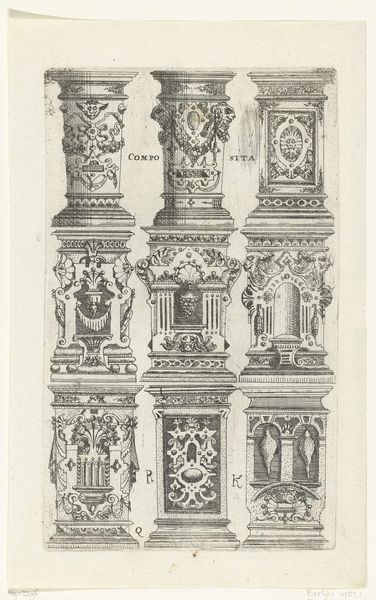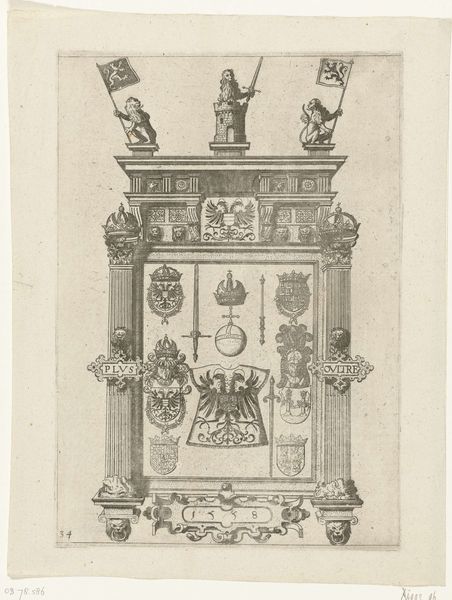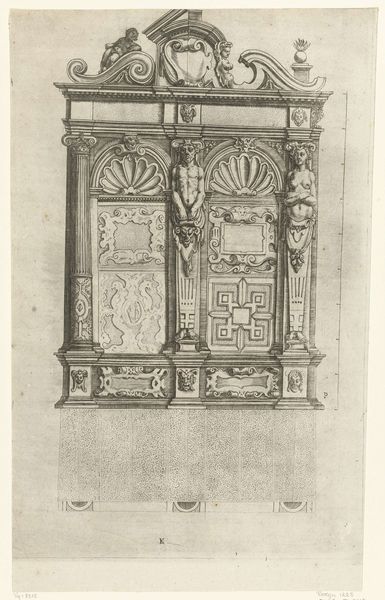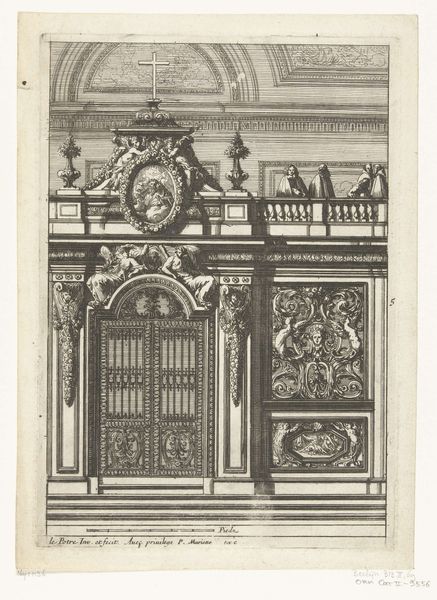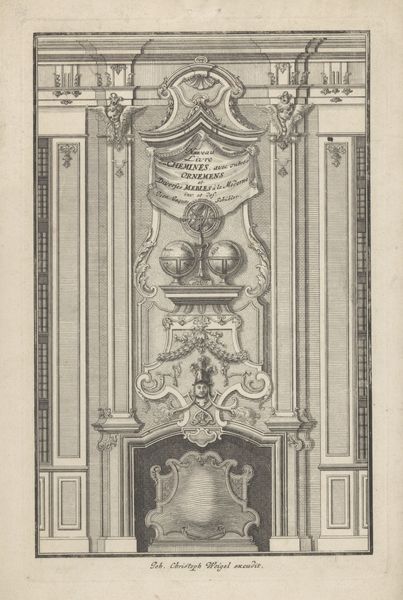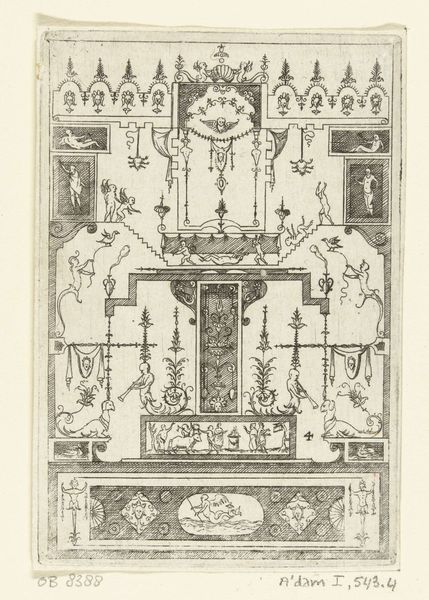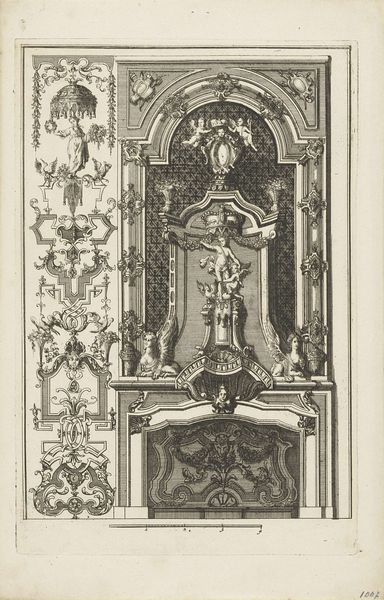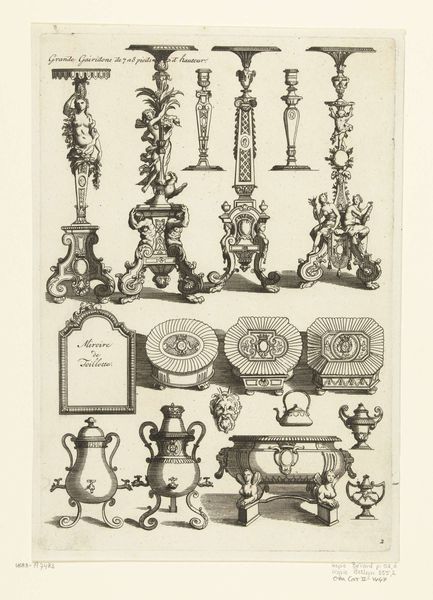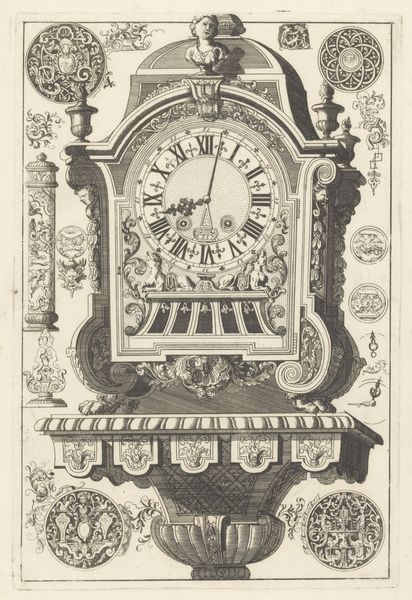
Dimensions: height 275 mm, width 185 mm
Copyright: Rijks Museum: Open Domain
Curator: Ah, I’m so glad we’re spending some time with this engraving today, it really speaks to the culture of its era. What do you think of it at first glance? Editor: Honestly? My first thought is: 'Wow, those are some seriously elaborate clocks!' They're practically sculptures masquerading as timekeepers, the designs seem flamboyant and I could see these in Versailles somewhere. Curator: Precisely! This is “Titelblad: Second Liure d’Orlogeries,” which roughly translates to “Title page: Second Book of Clockmaking.” The artwork is an engraving that showcases designs for clocks and ornate vessels, made before 1800, its artist remains anonymous, a reminder that not all creativity is destined for individual fame, especially in artisanry. Editor: The lack of a signature does feed into the artwork's nature. This feels less like a fine art piece and more like a catalog of aspirational, even inspirational designs; like an Ikea manual for extremely rich people wanting the fanciest grandfather clock. I imagine the clientele browsing through, picking their favorite flourishes. Curator: Exactly, in art historical circles, these prints played an interesting role. It's easy to forget that before widespread photography, artisans often relied on prints like these for inspiration and to stay current with trends. The Baroque aesthetic is prominent, seen through the detailed ornamentation and dynamic compositions, a perfect parallel with the societal context of aristocratic excess and a growing merchant class eager to flaunt wealth and cultural refinement. Editor: There’s such attention to detail, particularly in rendering the shadows to convey a 3D image out of a two-dimensional print. Curator: Well said. And I would highlight that timekeeping in the 18th century was not only a scientific matter, it was deeply embedded in social hierarchies. Owning an elaborate clock announced one’s access to knowledge, wealth, and power, particularly with many European colonial projects relying on precisely coordinated global trade routes dependent on accurate maritime chronometers. Editor: This definitely highlights how intertwined craftsmanship and social status could be, like the Instagram of its time, the elite showing off in clock form. Now, I am eager to discover other everyday objects with historical roots. Curator: It certainly opens avenues to thinking about how something as fundamental as telling time could become such a visible symbol of prestige and power.
Comments
No comments
Be the first to comment and join the conversation on the ultimate creative platform.

